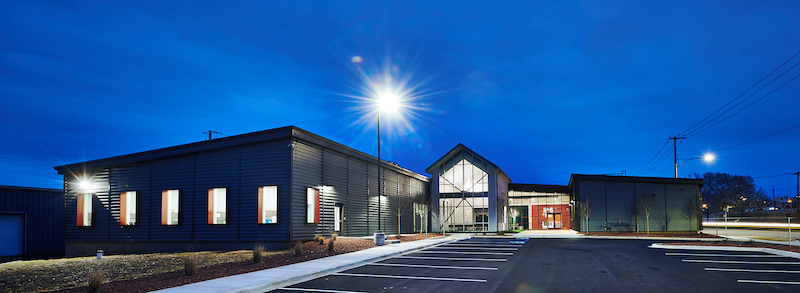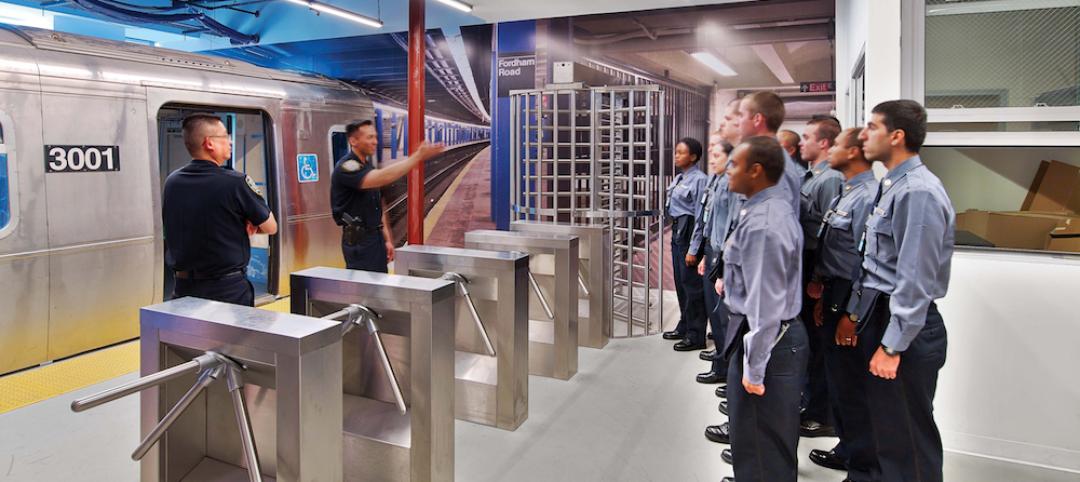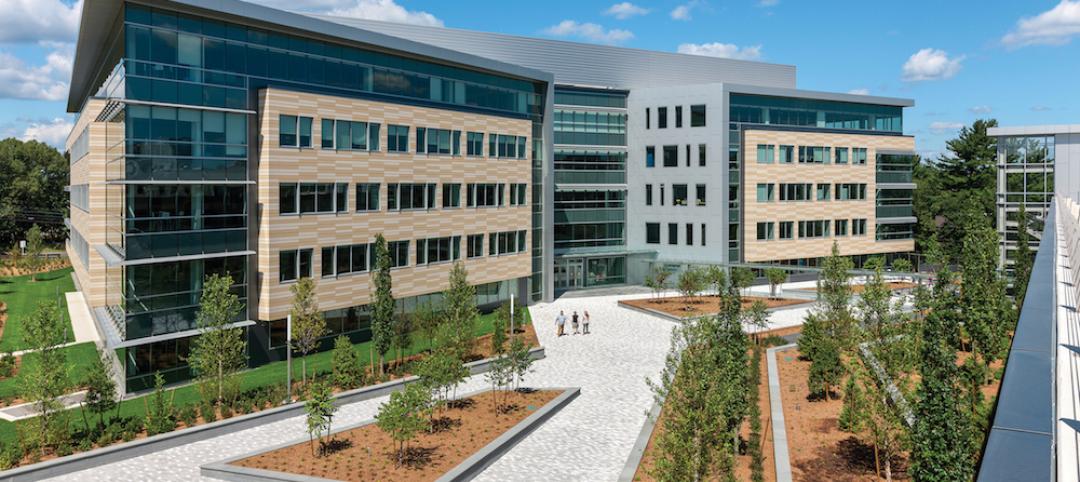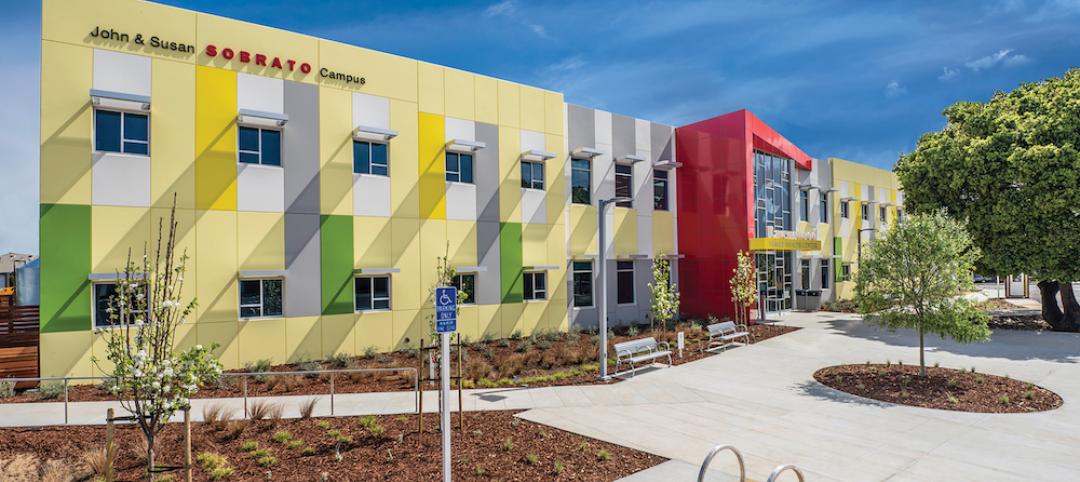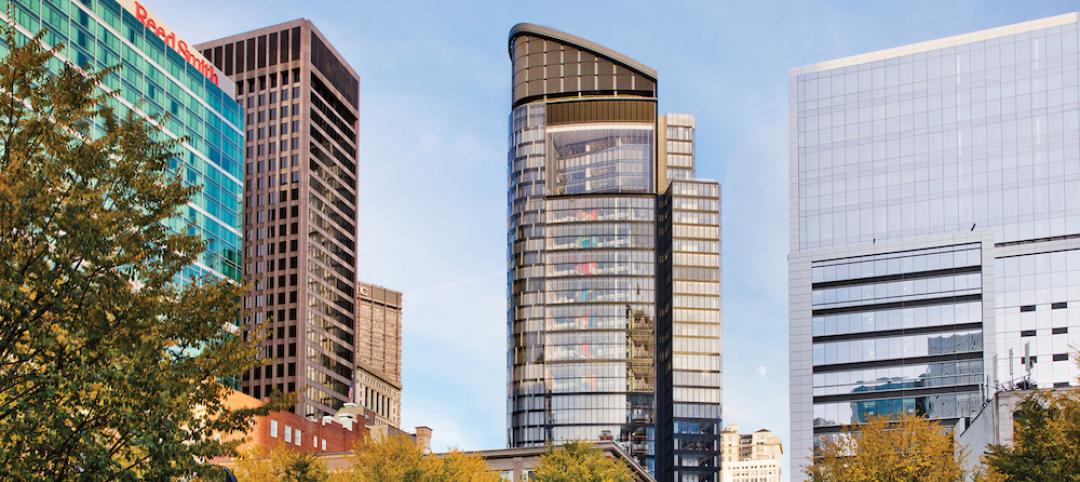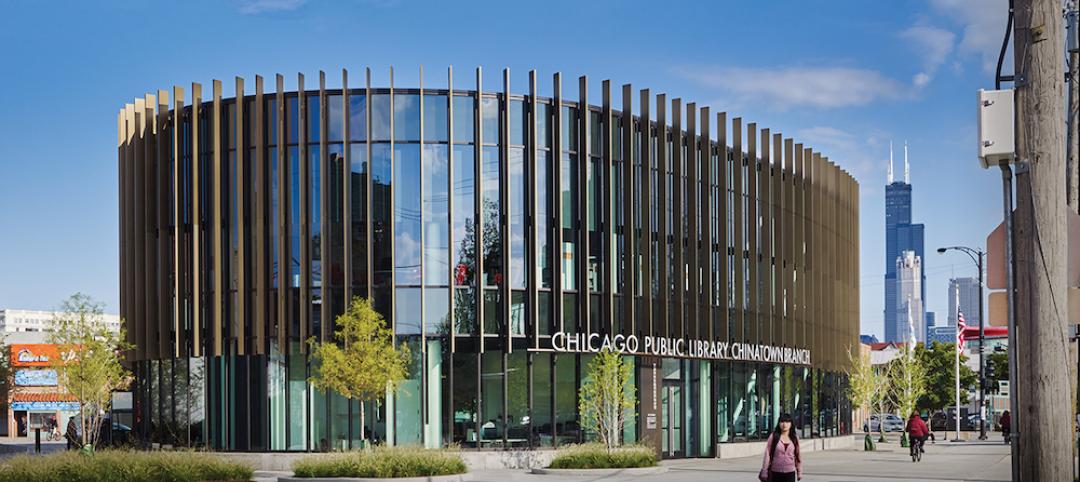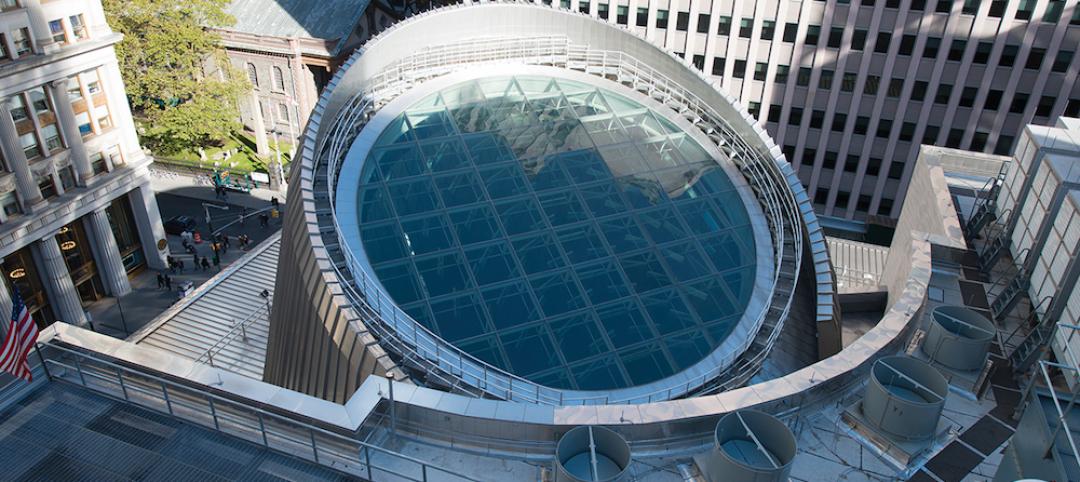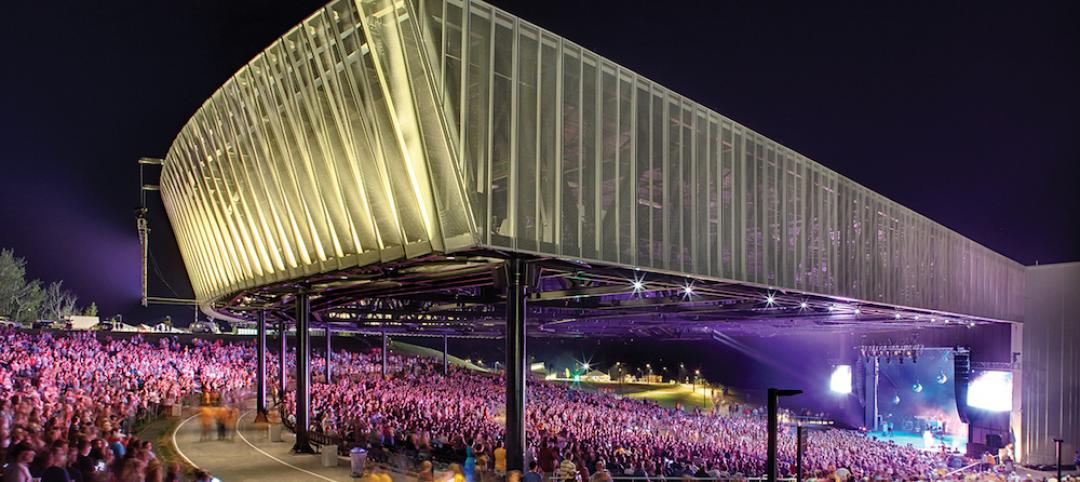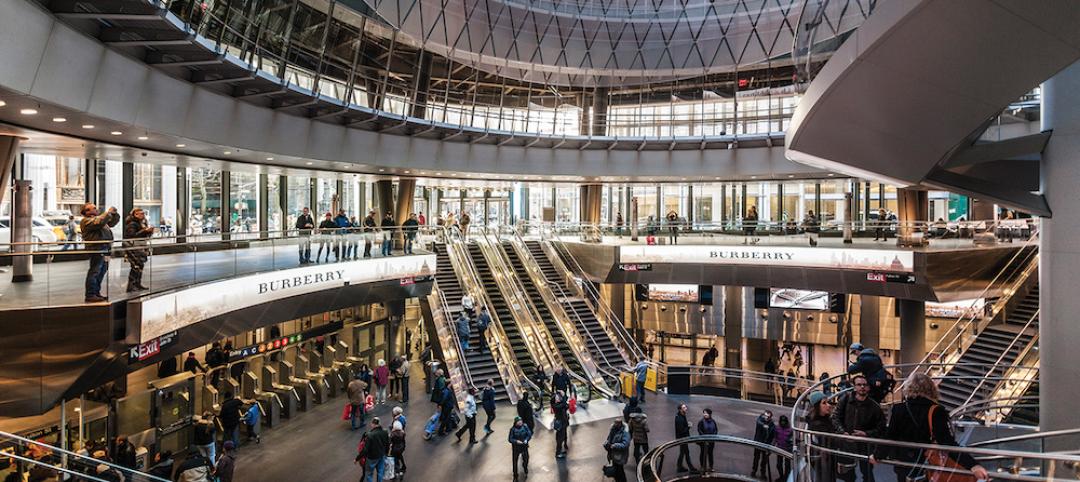The Firehouse Shelter, an outreach program of the Cooperative Downtown Ministries, provides an emergency shelter, a day shelter, meals, clothing closets, and addiction and literacy programs to up to 100 homeless men in Birmingham, Ala.
At its founding, in 1983, the shelter was housed in an old fire station. Over time, as the firehouse began to crumble, demand for services soared, and maintenance costs shot up, it became clear to the ministries that they needed a new, larger building.
It took two years to raise the nearly $5.7 million to build the new structure. The city contributed $1 million; the bulk of the money came from individuals and local charitable foundations.
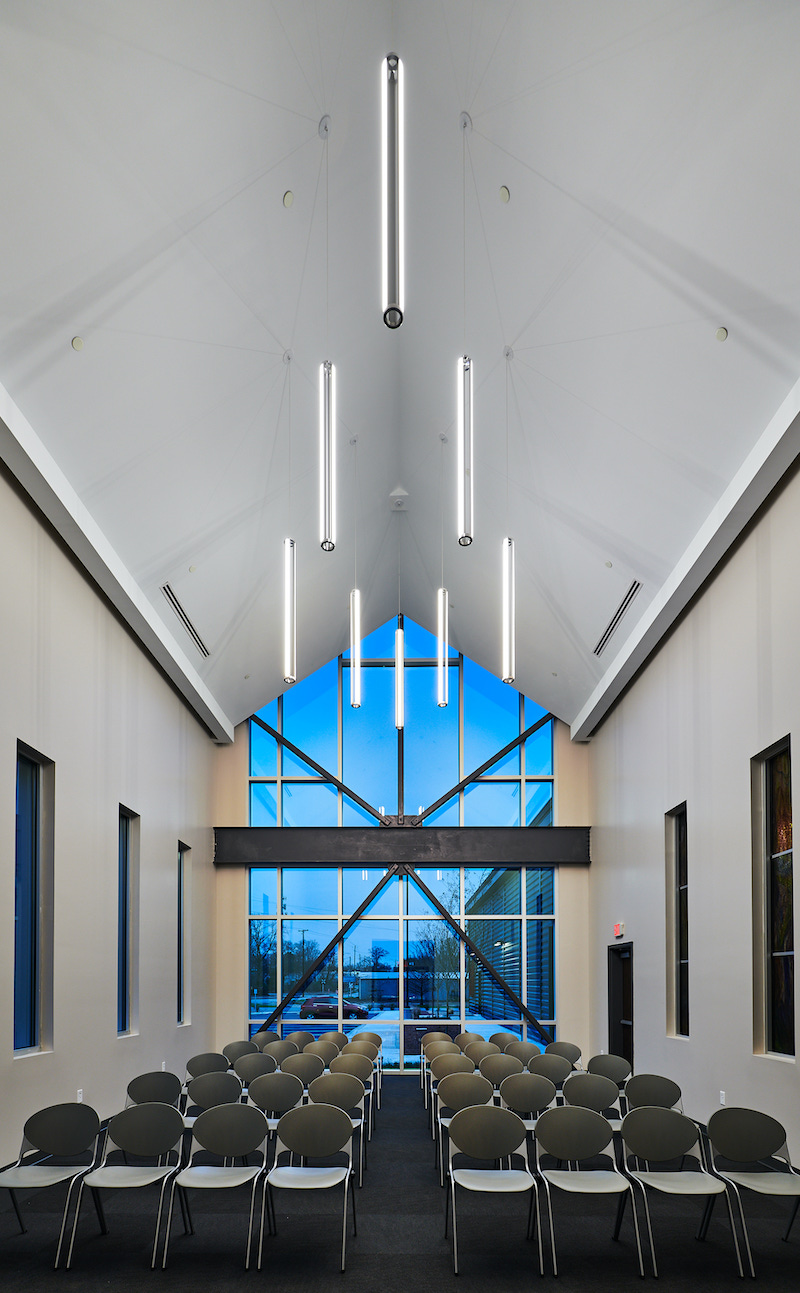 The crossed structural steel beams of the chapel provide an uplifting setting for meditation and prayer.
The crossed structural steel beams of the chapel provide an uplifting setting for meditation and prayer.
During that time, a design-build team led by Dunn Building Company met with the shelter’s staff to understand the most critical operational aspects of a facility for the homeless. The kitchen staff offered ideas on how to set up the food storage, food prep, and serving areas. Security personnel explained why certain areas of the building needed to be locked down at various times.
Shelter coordinators described the special needs of overnight guests. This led to the development of a three-tiered system of living quarters where guests can move up in privacy, based on how actively they participate in the shelter’s social programs.
Two factors emerged as paramount: durability/low maintenance, and a desire to create an inviting, non-institutional feeling. CMU, polished concrete, and epoxy-coated concrete were used on the walls and floors to ensure these elements would be highly durable, washable, and still have eye appeal. All finishes were selected with durability and cleanability in mind. The shelter area was equipped with hose bibs built into the walls so that living areas and heavily trafficked spaces could be easily washed down. Each bedding space has floor drains.
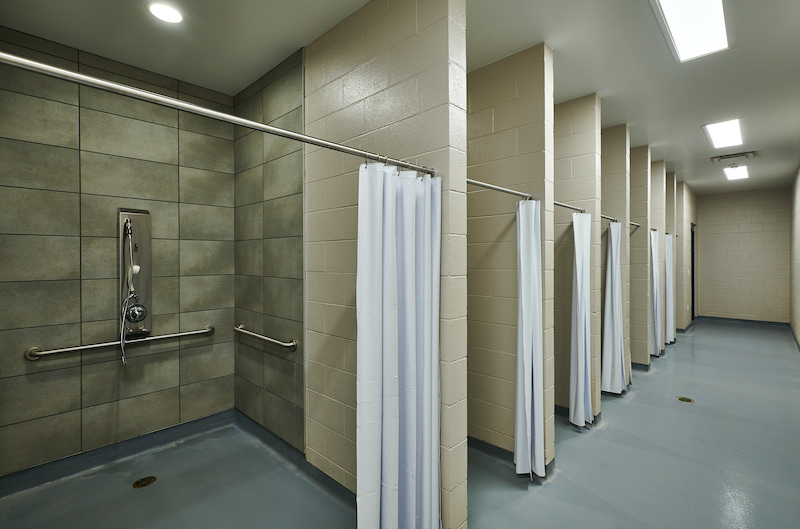 A walk-in plumbing chase between the main shower area and main toilet area provides ready access to pipes and fixtures that are most likely to need service. Restrooms were designed with durability and serviceability in mind.
A walk-in plumbing chase between the main shower area and main toilet area provides ready access to pipes and fixtures that are most likely to need service. Restrooms were designed with durability and serviceability in mind.
The team worked diligently to select furniture, flooring, and equipment that would serve the needs of the shelter occupants, provide durability, look good, and fit within the $202/sf construction framework.
To create an aesthetically pleasing, cost-effective facility, Poole & Company Architects and structural engineer MBA Engineers designed a pre-engineered structure clad in horizontal ribbed insulated metal panels, enhanced by vertical trim between the panels and fire engine red trim at the windows and storefronts.
Just as Dunn Building Company broke ground, down came the rains—17 days of downpours in the first 35 days on site. Rather than try to recondition the wet, fatty clay soil, the contractor replaced it with a more suitable sandy clay. That effort took time and money, but the contractor had no choice, and the project still came in on time and within the budget.
The new Firehouse Shelter, with twice the beds (100) of the old facility, opened on February 18, giving renewed hope to Birmingham’s homeless.
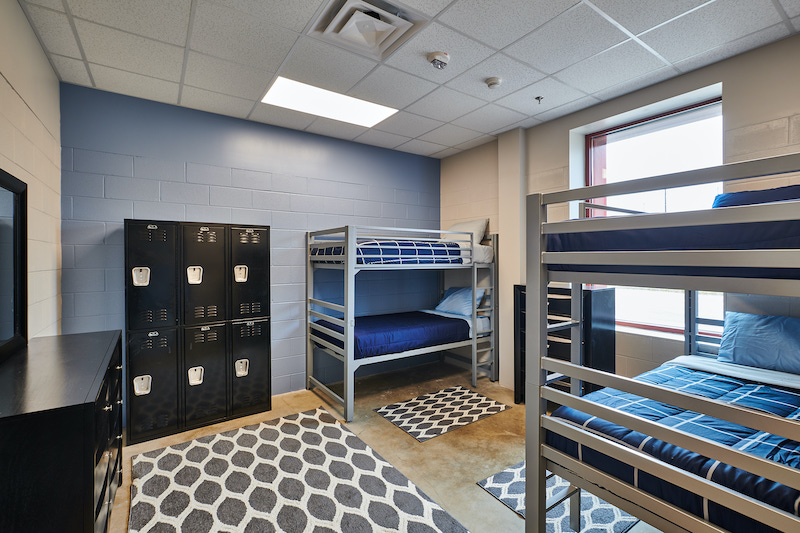 The three-tier system of housing enables guests to go from open sleeping quarters, to semi- private quarters, to graduated bedding, based on their level of participation in the facility’s addiction, GED/literacy, employment, and faith-based programs. The shelter also has limited emergency accommodations for up to two families.
The three-tier system of housing enables guests to go from open sleeping quarters, to semi- private quarters, to graduated bedding, based on their level of participation in the facility’s addiction, GED/literacy, employment, and faith-based programs. The shelter also has limited emergency accommodations for up to two families.
Judges’ Comments
Juror Josh Greenfield, praised the project team for providing an outdoor courtyard/place of respite, plenty of natural light, and a meditation space (the chapel). Judges also noted that the constructors had to work within a building site that touched the property line on three sides, leaving little room for laying down materials and maneuvering equipment. Deliveries had to be received and unloaded in the street; materials had to be stored out of the way of construction activities, requiring precise coordination with all trade contractors on site.
Submitting firm/General contractor: Dunn Building Company
Owner: The Firehouse Shelter
Architect: Poole & Company Architects
Structural Engineer: MBA Engineers
Mechanical/plumbing engineer: RJ Mechanical
Electrical engineer: Wadsworth Electric/Hyde Engineering
Size: 28,000 sf
Construction cost: $5,659,000
Construction time: January 2019 to February 2020
Delivery method: Design-build
Photo credit: Edward Badham / EB Visual Productions
Related Stories
Building Team Awards | May 27, 2016
Big police academy trains thousands of New York's finest
The Police Training Academy in Queens, N.Y., consists of a 480,000-sf academic/administration building and a 240,000-sf physical training facility, linked by an aerial pedestrian bridge.
Building Team Awards | May 26, 2016
Cimpress office complex built during historically brutal Massachusetts winter
Lean construction techniques were used to build 275 Wyman Street during a winter that brought more than 100 inches of snow to suburban Boston.
Building Team Awards | May 25, 2016
New health center campus provides affordable care for thousands of Northern Californians
The 38,000-sf, two-level John & Susan Sobrato Campus in Palo Alto is expected to serve 25,000 patients a year by the end of the decade.
Building Team Awards | May 24, 2016
Los Angeles bus depot squeezes the most from a tight site
The Building Team for the MTA Division 13 Bus Operations and Maintenance Facility fit 12 acres’ worth of programming in a multi-level structure on a 4.8-acre site.
Building Team Awards | May 23, 2016
'Greenest ballpark' proves a winner for St. Paul Saints
Solar arrays, a public art courtyard, and a picnic-friendly “park within a park" make the 7,210-seat CHS Field the first ballpark to meet Minnesota sustainable building standards.
Building Team Awards | May 20, 2016
Pittsburgh's Tower at PNC Plaza raises the bar on high-rise greenness
The Building Team designed the 800,000-sf tower to use 50% less energy than a comparable building. A 1,200-sf mockup allowed the team to test for efficiency, functionality, and potential impact on the building’s occupants.
Building Team Awards | May 19, 2016
Chinatown library unites and serves two emerging Chicago neighborhoods
The 16,000-sf, pebble-shaped Chinatown Branch Library was built at the intersection of new and old Chinatown neighborhoods. The goal is for the building to unite the communities and serve as a catalyst for the developing area.
Building Team Awards | May 19, 2016
NYC subway station lights the way for 300,000 riders a day
Fulton Center, which handles 85% of the riders coming to Lower Manhattan, is like no other station in the city’s vast underground transit web—and that’s a good thing.
Building Team Awards | May 16, 2016
Upstate New York performing arts center revives once-toxic lakefront site
Early coordination, prefabrication, and judicious value engineering contributed to the accelerated completion of the Onondaga Lakeview Ampitheater, a Upstate New York design-build project.
Building Team Awards | May 16, 2016
12 building projects that represent the best in AEC team collaboration
A busy, light-filled Manhattan subway station and a pebble-shaped Chicago library are among the winners of the 19th annual Building Team Awards.


